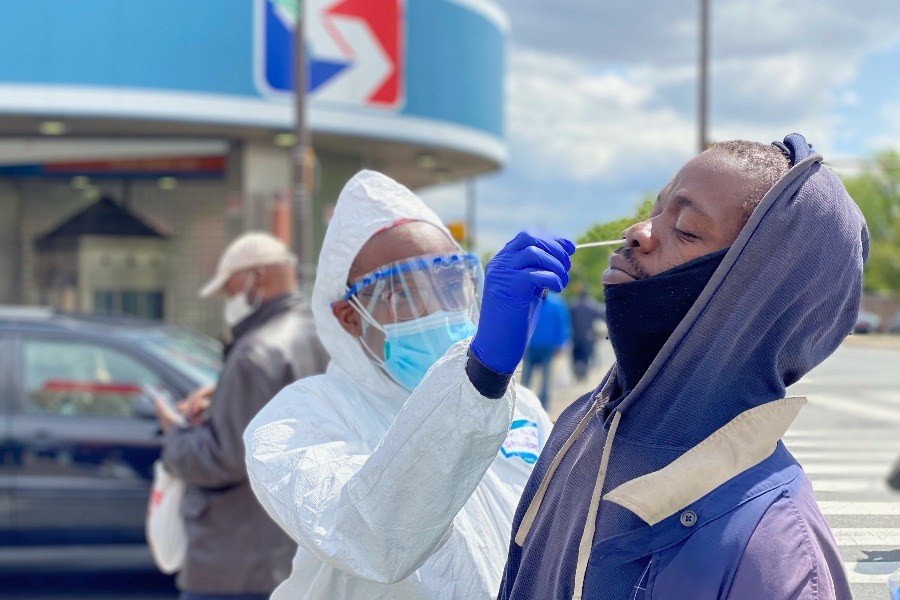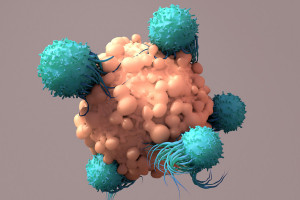Philly Should Declare Racism a Public Health Crisis — And Then Do Something About it
Local health experts weigh in on what it would mean to declare racism a public health emergency and what our officials can do to ensure health equity now.

Dr. Ala Stanford, founder of the Black Doctors COVID-19 Consortium, began administering COVID-19 tests in Philadelphia after learning that Black residents were being disproportionately affected. / Marshall Mitchell
Crisis is a term we often hear in conversations about things we perceive to be of grave danger to our lives or livelihood. When applied to public health, experts have loosely defined a crisis as an issue that affects large numbers of people, threatens those individuals’ health over the long-term, and requires large-scale solutions to resolve. There is no shortage of data that proves racism does all these things and that it has contributed to Black people suffering and dying from hypertension, diabetes, heart disease, cancer, stroke, and a host of other illnesses at higher rates than white people.
Yet, last month, when more than 1,200 employees at the Centers for Disease Control (CDC) called on the nation’s chief public health institute to declare racism a public health crisis amid an increasing disparity in attention to the spread of COVID-19 in the Black community, the request largely fell on deaf ears.
Several local governments around the country have since taken matters into their own hands by declaring racism a public health crisis in their individual regions. Philadelphia was not among them, but it should be.
On a national level, not much has changed. The CDC has a funding mechanism in place that can award funds to state, local, tribal, and territorial public health agencies who declare an issue a public health emergency. Thus, a national declaration could lead to increased funding to support efforts that address racism and the health inequities it creates.
But as assistant research professor of epidemiology and biostatistics at Drexel’s Dornsife School of Public Health Sharrelle Barber states, declaring racism a public health crisis is an important first step — but it is only that, a first step.
“A declaration, at least, acknowledges the problem and it begins a narrative shift that I think is so necessary because, so often, we frame racial inequities as a behavioral problem with a victim-blaming narrative instead of acknowledging that behaviors are constrained by the systems in which people find themselves,” she said.
“Racism is literally killing us, and we’ve got to begin to move from the symbolic declaration to actually address the structures, systems and policies that maintain these inequities.”
We spoke with three local health experts about concrete actions Philly’s health officials can take right now to address the health inequities racism is creating in the city. Here’s what they suggest.
Hire and empower community health workers
“Healthcare is a power structure and patients are at the bottom of it,” says Penn health policy researcher, Shreya Kangovi. “As health professionals, we tell them what to do, and they listen.”
Racism only exasperates this structure, often leaving Black patients feeling powerless to affect change in the way their health is discussed and addressed. Kangovi believes local health institutions need to shift toward programs that employ more community health workers; people who serve in healthcare roles that are defined by who they are, not by their training.
“We have this problem in healthcare where we just focus on the training and credentials that people have,” said Kangovi, founding executive director of the Penn Center for Community Health Workers. “Community health workers are unique in that they’re defined by their identity. They are people, working with people who have a disadvantage, who have also experienced that disadvantage themselves.”
According to Kangovi, community health workers have existed in the United States for over 80 years. These community members are hired by local health organizations to provide basic healthcare within their community. In this way, employing community health workers is an ideal path to turning the healthcare power structure on its head as community members are empowered to become health professionals and help others like themselves by relating to them on a personal level. The structure thereby transfers wealth and power from people in ivory towers to people with shared, lived experience.
Kangovi’s idea is already catching on. Presidential hopeful Joe Biden recently pledged support for the idea of expanding the country’s community health workforce with a $450 billion commitment “to give more people the choice to receive care at home or in supportive community situations.”
“No matter what else happens, that has to be the first step, because otherwise health solutions will always be designed by and for privileged people,” she said.
Ensure equal investment in Philly’s Black neighborhoods
“One of the most fundamental drivers of racial inequities in this country is segregation,” said Barber, whose research focuses on the role of structural racism in shaping health and racial/ethnic health inequalities among Black people.
In Philadelphia, your zip code can determine your life expectancy. COVID-19 is just the latest example of how the most racially segregated zip codes tend to have the worst health outcomes. In a recent report, Barber and her colleagues posit that “due to historical and contemporary discriminatory housing practices (e.g. redlining) and decades of systematic disinvestment, the racially segregated neighborhoods that are less likely to have access to quality healthcare, access to essential pharmaceuticals, and optimal housing conditions are the same neighborhoods with limited health-promoting neighborhood environments (e.g., access to green space, healthy foods, low violence, high social capital).” These conditions can lead to higher stress levels, poorer physical and mental health, and possibly higher susceptibility to infection.
“This is how racism operates and this is how it’s operating in this moment,” Barber said. “But these racial inequities, especially with COVID-19, do not have to be as bad as they are. If we think about the systems and structures and address those in this moment, then we can actually save lives.”
According to Barber, the City can begin saving lives by investing in Black communities to ensure they have the necessary resources, jobs and education to thrive and to do so in a way where it benefits them, so they’re not being displaced by gentrification.
“That’s where we need to focus, where people live because it has the potential to have a big impact,” she said. “The residential environments in which we live can have such a big impact on our health, and they’re a major driver of these inequities.”
Aim for equality in wealth
“Equality in health is intimately tied to equality in wealth,” said Michelle Albert, president of the Association of Black Cardiologists and a national volunteer with the American Heart Association.
According to Albert, wealth includes having access to the appropriate finances and other resources that enable opportunity.
According to the National Partnership for Women & Families, for every dollar that a white person makes, Black women make 62 cents, Native American women make 57 cents and Latin Americans make 54 cents. A separate report by PayScale found Black men earn 87 cents for every dollar a white man makes.
“We must work with affected communities as partners to achieve equality in wealth and health,” she said.
Albert says racist policies have had a negative impact on health for decades and pointed to five ways she believes health leaders can change that by:
- Advocating for public policy and institutional initiatives that eliminate educational and economic disparities
- Ensuring access to equitable and quality healthcare
- Promoting diversity in clinical trials by including patients of different racial and ethnic backgrounds, as well as having diverse investigators leading those trials
- Significantly increasing the numbers of persons from disadvantaged, and especially different racial, ethnic, and socioeconomic backgrounds in medical and healthcare fields
- Addressing structural racism in medicine and research to ensure people of color have leadership and grant opportunities and alleviating the structural racism that goes into research grant funding, where research about social factors or disparities are often regarded as less important than other types of research
“COVID-19 has unmasked anew longstanding disparities in health and economic disparities related to race and ethnicity, and these are largely driven by a history of segregation and a lack of opportunity that results in social conditions and factors that dictate health,” Albert said.
“I think declaring racism as a deep problem forces our institutions and politicians to act on it. If you don’t declare something as an issue, then you’re not going to act on it. And there are multiple ways to act on it but first, you have to say that it’s an issue.”

Philadelphia magazine is one of more than 20 news organizations producing Broke in Philly, a collaborative reporting project on solutions to poverty and economic mobility in the city. Read all our reporting here.


